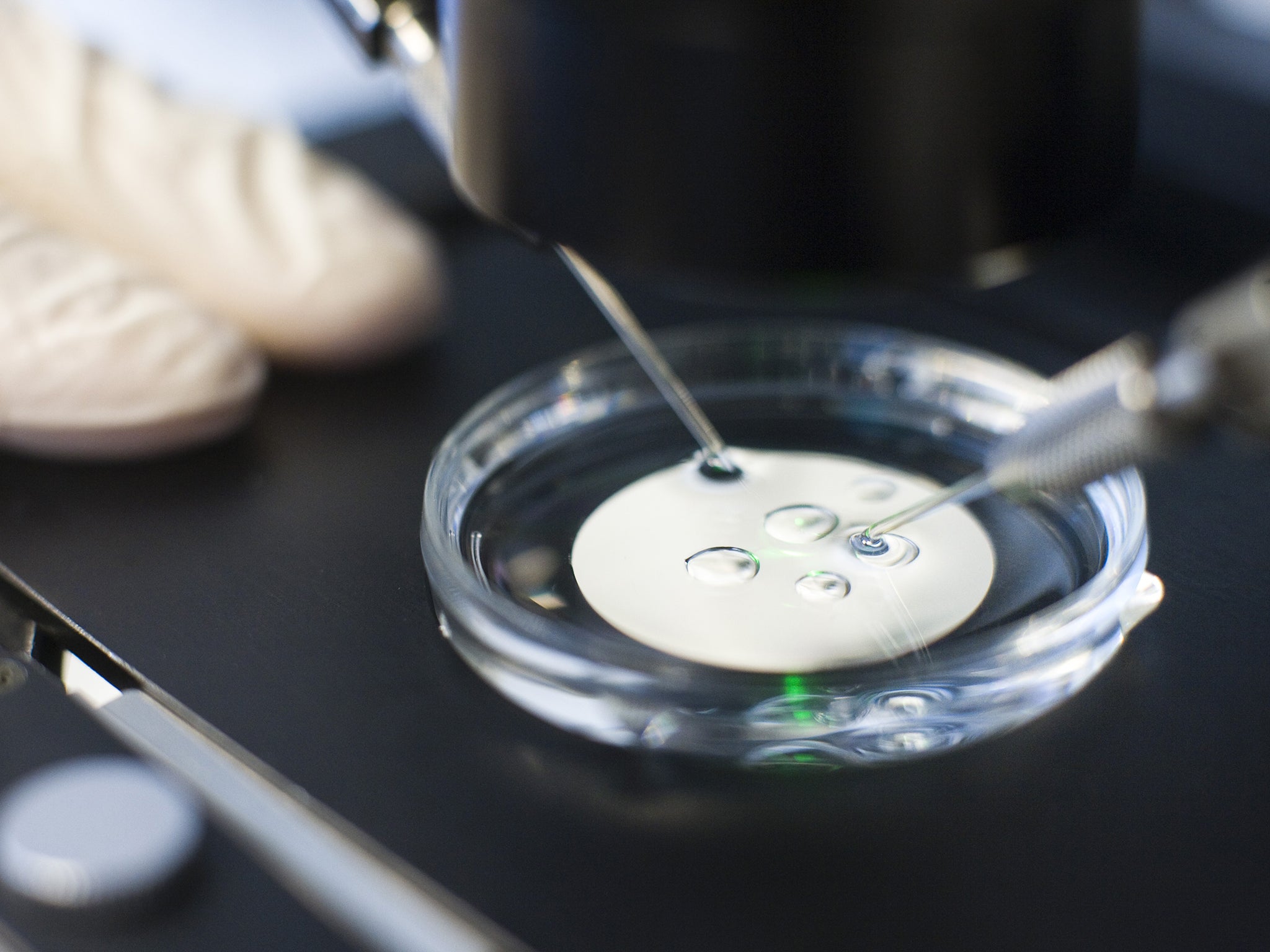Improved IVF won’t be enough to help young women start a family
The suggestion that fertility treatment is becoming more straightforward is a fallacy


Your support helps us to tell the story
From reproductive rights to climate change to Big Tech, The Independent is on the ground when the story is developing. Whether it's investigating the financials of Elon Musk's pro-Trump PAC or producing our latest documentary, 'The A Word', which shines a light on the American women fighting for reproductive rights, we know how important it is to parse out the facts from the messaging.
At such a critical moment in US history, we need reporters on the ground. Your donation allows us to keep sending journalists to speak to both sides of the story.
The Independent is trusted by Americans across the entire political spectrum. And unlike many other quality news outlets, we choose not to lock Americans out of our reporting and analysis with paywalls. We believe quality journalism should be available to everyone, paid for by those who can afford it.
Your support makes all the difference.It’s a truth universally acknowledged that a woman in her late thirties in possession of a decent career must be in want of a fertility doctor, into whose hands she can place her dwindling and deeply unrealistic hopes of “having it all”. At least, that’s what you might be led to believe if you’ve soaked up much of the very modern scaremongering about ageing first-time mothers and fertility treatment.
IVF, now 35 years old, has for the past three decades had an average success rate of around 30 per cent – a statistic that declines rapidly with the age of the prospective parents using the technique. Nobody goes into the treatment room expecting a miracle. Of course it was never designed, as some commentators have it, as a last chance saloon for women who put work ahead of their womb. It has, rather, provided the happy chance for some couples unable to conceive to have a family of their own.
We once called IVF children “test-tube babies”. No longer; that the procedure is widely available on the NHS is a mark of the humanity of our attitude towards infertility today. So surely the news that a simple test – cheap to offer and potentially available to the public within a year – could almost treble the success rate of IVF treatment should be a cause for celebration?
I’m not so sure. The suggestion that fertility treatment is becoming more straightforward is a fallacy. IVF is a painful, expensive and risky process. On the same day that it was revealed IVF success rates could soon soar, we heard new evidence reveals that IVF treatment is linked to a 37 per cent higher risk of being diagnosed with ovarian cancer. Of course, it could be that the complications which lead to poor fertility are responsible for the higher risk of cancer – but we don’t know. No woman wants to resort to medical intervention to start family, yet increasing numbers are forced to do so – 47,000 women started an IVF cycle in 2011, the last year figures are available. And it’s not because they are stubbornly refusing to accept that their window of fertility is only open for a short period of time, deliberately “leaving it late”. If you pile on all the social pressures heaped upon women who do want children but can’t quite work out when or how they will manage to do so, that window is barely ajar.
As a society we denigrate teen mothers; we do all we can to stop young people conceiving a child out of a stable relationship or before they have finished their education. More women than men are now entering university and that long period of extended childhood now often continues until, or beyond, the age of 22 – well into the biological fertile period. When it’s over, young women are cast adrift into a world where work is short term and unreliable, housing expensive and relationships tested to breaking point.
And while these young women are nagged constantly by the media to plan carefully for a family, never allowing them to forget that their time will soon run out, the business of conception is constantly painted as a female issue. No surprise that the age of first pregnancy is rising among women when the average age at which a man becomes a father for the first time is now 32. This is not just about women; there are plenty of twentysomethings who would happily have a child if only they could find a man of the same generation willing to share that ambition. The extended childhood we have created has its consequences; the rising use of IVF when relationships and incomes are stabilised, just as the window is slamming shut, is one.
In work, the picture for women gets worse: it matters that women only earn 52 per cent of what mean earn each year, a figure shared at the launch of the Women’s Equality Party yesterday, because it demonstrates how often having a child means a woman sacrificing her career. The fact that the organisation She’s Back – dedicated to showing that women who left work for their child’s first chapter of life still have skills worth valuing – had to be set up at all speaks volumes.
Governments have tried to do something about all this: they have encouraged family-friendly workplace policies; they have offered free childcare; they have introduced shared parental leave. But none of this helps if women – now the main breadwinner in a third of families – feel they will be sidelined after having children. So, yes, it’s welcome to hear that scientific progress means that infertile couples will have a better chance of having a family. But there’s far more than that to the problem of when or whether a woman manages to have a child. In an environment such as this, is a surprise anyone manages it at all.
Join our commenting forum
Join thought-provoking conversations, follow other Independent readers and see their replies
Comments